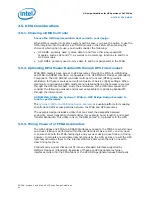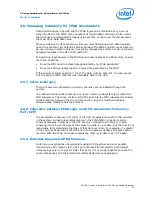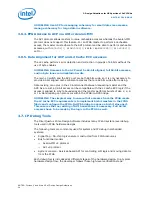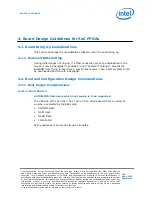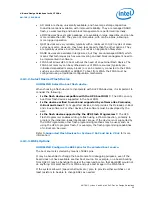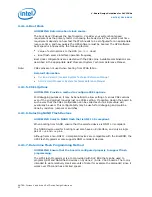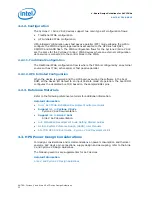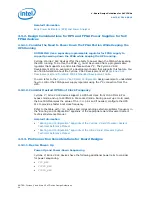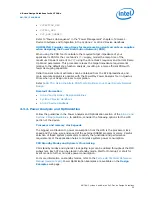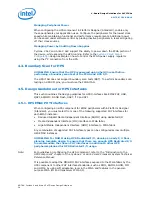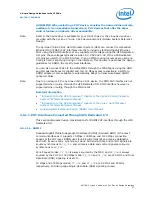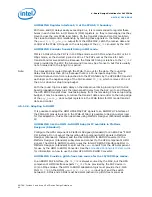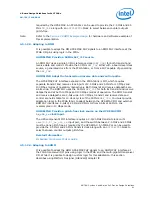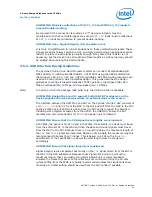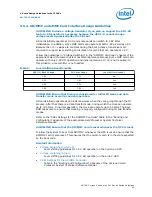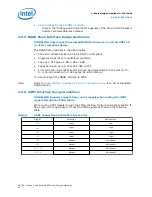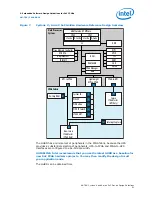
Managing Peripheral Power
When configuring the HPS component in Platform Designer (Standard), enable only
those peripherals your application uses. Configure the peripherals for the lowest clock
speed while maintaining functional and performance requirements. Additional power
can be saved under software control by placing inactive peripherals in reset and gating
off their clock sources.
Managing Power by Shutting Down Supplies
Cyclone V SoC and Arria V SoC support the ability to power down the FPGA portion of
the device, while keeping the HPS running. Refer to the
design example on how to control the FPGA power supply regulator
using the I
2
C connection from the HPS.
4.4. Boundary Scan for HPS
GUIDELINE: Ensure that the HPS is powered up and held in reset before
performing a boundary scan test of the FPGA and HPS I/O.
The HPS JTAG does not support boundary scan tests (BST). To perform boundary scan
testing on HPS I/O pins, you must use the FPGA JTAG.
4.5. Design Guidelines for HPS Interfaces
This section outlines the design guidelines for HPS Interfaces like EMAC PHY, USB,
QSPI, SD/MMC, NAND Flash, UART, I
2
C and SPI.
4.5.1. HPS EMAC PHY Interfaces
When configuring an HPS component for EMAC peripherals within Platform Designer
(Standard), you must select from one of the following supported PHY interfaces for
each EMAC instance:
•
Reduced Gigabit Media Independent Interface (RGMII) using dedicated I/O
•
Media Independent Interface (MII) interface to FPGA fabric
•
Gigabit Media Independent Interface (GMII) interface to FPGA fabric
Any combination of supported PHY interface types can be configured across multiple
HPS EMAC instances.
GUIDELINE: For RGMII using HPS Dedicated I/O, develop an early I/O floor-
planning template design to ensure that there are enough HPS Dedicated I/O
to accommodate the chosen PHY interfaces in addition to other HPS
peripherals planned for HPS Dedicated I/O usage.
Note:
For guidelines on configuring the HPS component, refer to the "Introduction to the
HPS Component" chapter of the Cyclone V or Arria V Hard Processor System Technical
Reference Manual.
It is possible to adapt the MII/GMII PHY interfaces exposed to the FPGA fabric by the
HPS component to other PHY interface standards—such as RMII, RGMII, SGMII, MII
and GMII—by using soft adaptation logic in the FPGA and features in the general-
purpose FPGA I/O and transceiver FPGA I/O.
4. Board Design Guidelines for SoC FPGAs
AN-796 | 2018.06.18
AN 796: Cyclone V and Arria V SoC Device Design Guidelines
36



